Golden recipes for preparing Beijing cabbage for the winter in jars
Winter pickles with Chinese cabbage are becoming more and more popular. They represent an excellent alternative to canned food with other vegetables and at the same time contain a lot of vitamins and useful elements. Canning recipes for Chinese cabbage are simple and affordable. How exactly to cook them, our article will tell.
The content of the article
Is it possible to harvest Beijing cabbage in jars
Peking cabbage is characterized by particularly long shelf life - up to a year or more... Which makes it an absolute favorite among vegetables suitable for canning for the winter. The longer the cabbage is kept in the jar, the brighter and richer its taste becomes. Thanks to this, the product can be eaten without fear even a year after salting.
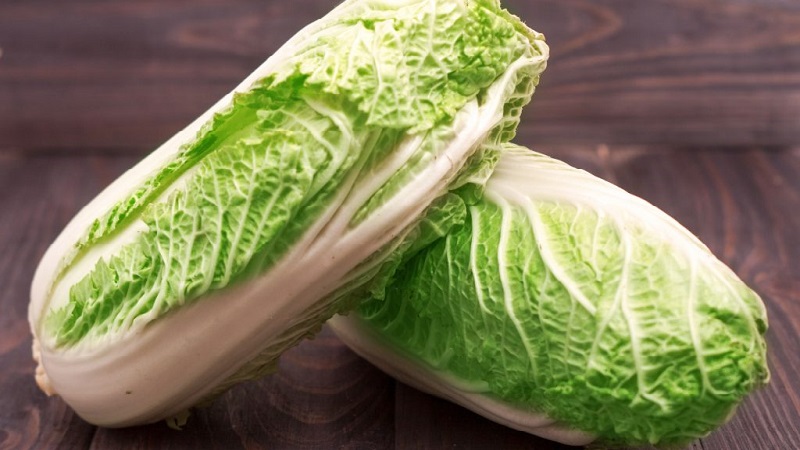
Choosing and preparing cabbage
Canned food will not be suitable for storage if it is prepared from low-quality ingredients... Peking cabbage is no exception. Only ripe and healthy vegetables are chosen for harvesting. If the head of cabbage is damaged by frost, rot, mold, insects, it is not suitable.
Attention. For winter harvesting, domestic hybrids and varieties are preferable - Kudesnitsa, Nika, Vorozheya, Pava and others.
The next step is to prepare the cabbage for conservation... This requires:
- remove dried top casting;
- soak the forks for half an hour in cold salted water (for a crunch);
- remove the protruding stump;
- wash the heads of cabbage with water.
Take a note:
Cauliflower salad for the winter in jars
How to marinate correctly - a classic recipe
Marinade with vinegar gives the salting an unforgettable taste and aroma. Together with this, it contributes to the long-term preservation of the product.
For a classic recipe for pickling cabbage, you will need the following ingredients:
- 500 g of Chinese cabbage;
- 0.5 l of water;
- 100 ml of table vinegar;
- 2 tbsp. l. Sahara;
- 3 tbsp. l. salt;
- 1 chilli pod
The cooking process is very simple:
- Cabbage heads are washed, disassembled into separate leaves and chopped into strips.
- Dissolve sugar and salt in water with vinegar, bring to a boil.
- Cabbage with pepper is placed in the prepared container and poured with the still not cooled marinade.
- The can is rolled up, turned over and insulated.
- The completely cooled product is transferred to a place for further storage.
So that winter harvests from Peking cabbage last longer, heads of cabbage are washed just before cooking, not in advance.
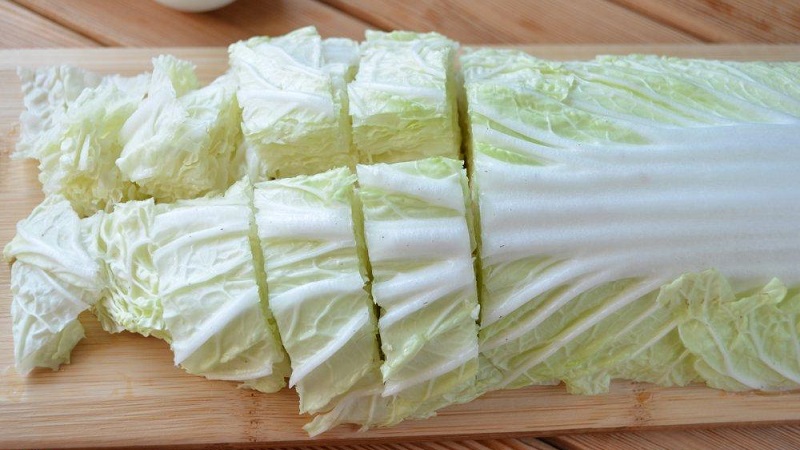
Recipe variations
For a more piquant taste, there is a variation of the classic recipe.
Salting products:
- 1 head of cabbage "Peking";
- small ginger root (no more than 2 cm);
- 1 tbsp. l. ground chili;
- 1 sweet pepper;
- 3-5 cloves of garlic;
- 1 tsp coriander seeds;
- 1 bay leaf;
- 2 liters of water;
- 4 tbsp. l. salt.
Step by step cooking:
- Chinese cabbage forks are cut lengthwise into quarters.
- Lay, pressing, in a container.
- To prepare the brine, salt is diluted in boiling water and a bay leaf is thrown there.
- The mixture is allowed to cool and the prepared vegetable is poured over it.
- A load is placed on top, left warm for two days.
- To prepare a spicy dressing, mix peeled and crushed chili peppers with crushed garlic, grated ginger and coriander seeds.
- Salted cabbage pieces are washed under running water, squeezed and chopped.
- The product is mixed with a spicy dressing and again sent under oppression for one day in the heat.
- The resulting product is placed in sterilized jars, corked with lids and stored in a refrigerator or cellar.
The lower, light part of the leaves is not thrown away - they contain the most useful trace elements.
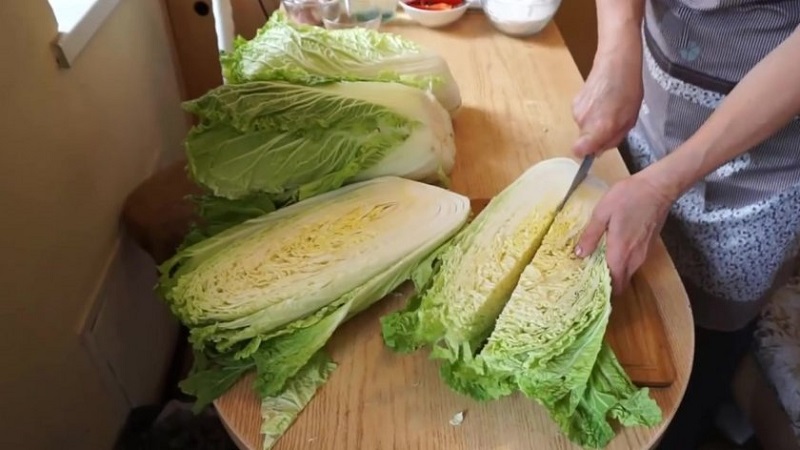
In korean
Korean-style cabbage will satisfy even the most sophisticated gourmets. The recipe for its preparation is extremely simple.
Components:
- 1 kg of Chinese cabbage;
- 50 g onions;
- 40 g of onion greens;
- 10 cloves of garlic;
- 30 g ginger;
- 1.5 liters of water;
- 30 g salt;
- 5 g sugar;
- 5 g of red ground pepper;
- 10 g ground black pepper;
- 5 g ground coriander.
Cooking steps:
- The head of cabbage is divided into pieces, removing the stump, then cut into strips.
- Finely chop the onion.
- The vegetables are mixed and poured with brine: the salt is dissolved in boiling water and cooled.
- A container filled with a vegetable-marinade mixture is placed under oppression for two days.
- The liquid is removed.
- Onion greens, garlic, ginger and all spices are ground in a blender to a paste.
- The resulting mixture is combined with salted cabbage, mixed and placed in sterilized and dried jars.
- The closed container is sent for storage in the refrigerator.
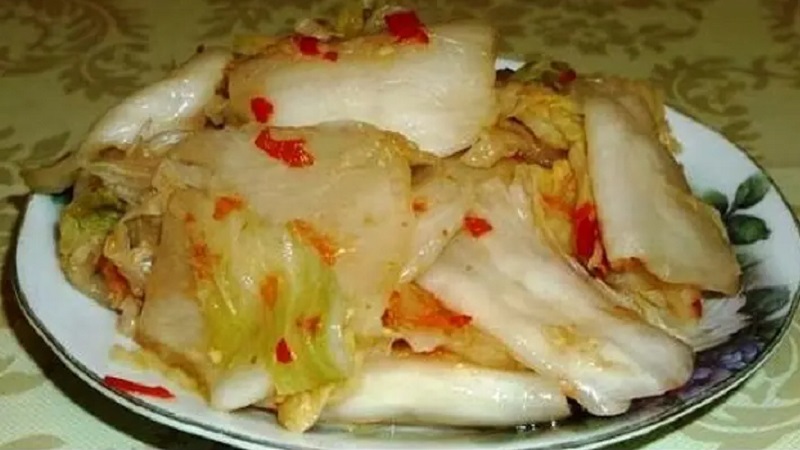
Kimchi
Spicy lovers will love the national Korean dish Kimchi. It is not only tasty, but also healthy.
Ingredients:
- 1 kg "Peking";
- 10 cloves of garlic;
- 4 tbsp. l. chili peppers;
- 3 tbsp. l. salt;
- 1 liter of water.
Salting cooking process:
- The head of cabbage cut into quarters without the stalk is placed in a deep container.
- At the same time, brine (brine) is prepared, for which salt is diluted in boiling water.
- The cabbage is poured with saline and left to soak for a day in a warm place.
- Prepare a hot pepper and garlic paste by grinding them in a blender.
- The mass is salted, diluted with water (3 tbsp. L.) And put into the refrigerator for a day.
- The brine is drained from the cabbage (in a jar, it will still come in handy). Each sheet is smeared with a paste.
- The product languishes in a warm place for another two days under oppression.
- The appetizer is stirred, a part of the salted brine is poured in and placed in the refrigerator.
With onions and bell peppers
And this recipe is suitable for those who do not like excessive spiciness of dishes, preferring fermented foods.
Salting components:
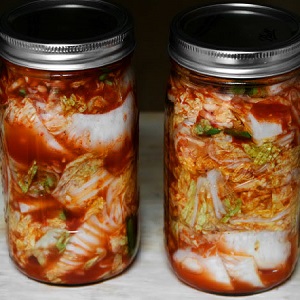 1 kg of Chinese cabbage;
1 kg of Chinese cabbage;- 500 g bell pepper;
- 500 g of onions;
- 1 chili pepper;
- 1 liter of water;
- 100 ml of table vinegar;
- 50 g of salt;
- 100 g of sugar.
Recipe:
- The forks are disassembled into leaves and coarsely chopped.
- Bell peppers are washed, peeled and cut into strips.
- Chili is peeled and cut into cubes.
- Peel and cut the onion into half rings.
- All ingredients are mixed in a deep bowl.
- For the brine, all the spices are boiled in boiling water for 5 minutes.
- At the bottom of the prepared container, lay a bay leaf, peppercorns, a vegetable mixture and pour everything with marinade.
- Sterilize for 5 minutes in a container with boiling water, pour in vinegar.
- Roll up and store in a cool place.
In this recipe you can not replace chili with other varieties of pepper.
Read also:
With daikon
You can salt Peking cabbage for the winter with other vegetables that match it in season.
Canning products:
- 3 kg of Chinese cabbage;
- 1 medium sized daikon;
- 1 carrot;
- 1 medium head of garlic;
- 1 onion;
- 1 ginger root (5 cm long)
- 100 g of onion greens;
- 2 tbsp. l. rice flour;
- 2 tbsp. l. shrimp paste;
- 3 tbsp. l. Sahara;
- chili pepper and salt to taste.
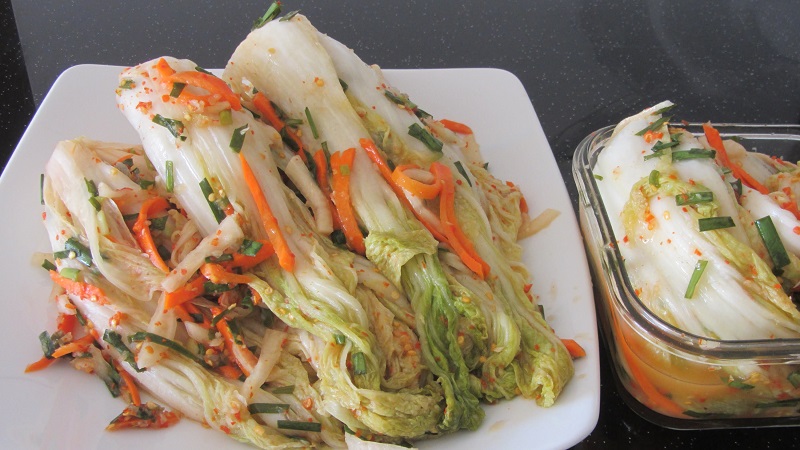
Cooking:
- Cabbage leaves are cut in half lengthwise, and then each piece is divided into two more parts, not reaching the stump.
- Salt and send to a prepared container to be salted for half a day.
- Pour sugar into 0.5 l of water and dissolve to a viscous consistency.
- Using a blender, prepare a spicy paste from onions, chili, ginger and garlic.
- Carrots and daikon are rubbed with strips.
- All ingredients, except for Beijing cabbage, are mixed.
- Salt residues are washed out of the main vegetable, allowed to flow around and greased on all sides with dressing.
- The vegetables processed in this way are placed in a prepared container for pickling for 5-7 days at room temperature.
- After the snack is rolled up and sent to storage in a cool place.
Storage conditions for preparations from Beijing cabbage
Pickles, pickled and pickled canned Peking cabbage are stored in basements and refrigerated chambers... The basic condition is the air temperature not exceeding + 17 ° С. This is necessary so that the natural fermentation and fermentation process does not start. Otherwise, the food will spoil instantly.
Tips from experienced housewives for cooking, rolling and storage
Peking cabbage differs in many ways from its related crops., therefore, it should not be processed and stored in exactly the same way as, for example, white cabbage.
Experienced housewives believe that washing the entire Peking is a waste of work. If there is no confidence in the purity of the product, you will have to disassemble the forks and rinse each sheet separately.
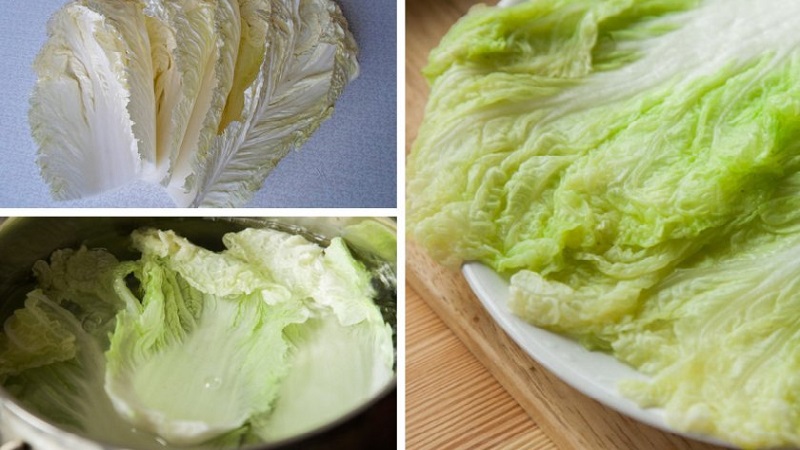
It is better to remove the top layers of cabbage and its stalk - the maximum amount of harmful compounds accumulates here.
According to experienced housewives, late varieties are best for salting... The forks should taste pleasantly sweet. If even a barely noticeable bitterness is felt, it is better to refuse such a vegetable. Heads of cabbage with dried leaves will not work either - cabbage simply will not give juice.
Do not use iodized salt during cooking - it will turn the workpiece into a soft and unpleasant-tasting mass. If foam appears during fermentation, it is carefully removed from the container.
Conclusion
Peking cabbage is great for pickling and long-term storage. Over time, she not only does not lose her taste, but also reveals them even more fully. This product, when pickled, is combined with other seasonal vegetables. And the conditions for storing canned food from "Peking" are in almost every home.